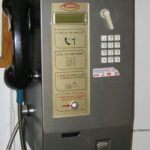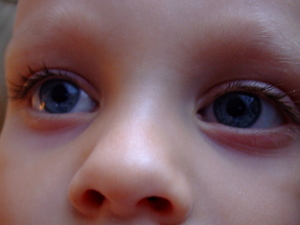First, let me say, if your baby is having trouble breathing, call 911. Don’t take chances and don’t “wait and see”.
This article is not to diagnose your child’s condition, it is simply a listing of some of the things that can cause a baby to wheeze.
There are several things that can cause a baby to wheeze. Some are serious and some are not so serious, but anytime your baby is wheezing, it requires a trip to the pediatrician just to be sure.
The first one is Bronciolitis: Symptoms are like a mild cold, stuffy or runny nose, possible low-grade fever, cough, fast, labored breathing, wheezing. Bronciolitis usually occurs within the first two years after birth. It is an infection that resides in the bronchioles of the lungs and requires antibiotics. RSV is a common virus which causes bronciolitis.
Asthma symptoms are coughing, usually after crying, chest tightness, shortness of breath, wheezing. With asthma, the bronchial tubes become inflamed, which causes difficulty breathing and the wheezing. Asthma must be diagnosed by a physician and requires medical treatment.
Pneumonia is like a bad cold that doesn’t get better. Symptoms are coughing, labored breathing, fever, chills, lack of appetite, vomiting, fussiness, chest pain, coughing up mucus that is yellow or green or is blood-tinged, wheezing. Pneumonia may start out like a cold and then get worse, or it may have a sudden onset; either way, your baby will need to be seen by a physician if you suspect pneumonia.
Environmental Allergy is much like a cold. Symptoms include congestion, runny nose, sneezing, red, itchy, watery eyes, dry cough, wheezing, skin rash. Nasal drainage with allergies is clear. This is not an emergency situation, but still requires medical attention. There are several products the physician can prescribe to give your baby relief.
Food allergies usually appear immediately after eating the food that is causing the reaction if there is a severe allergy, but may take up to 3 days in milder cases. Symptoms are rash, swelling of the tongue or the throat, difficulty breathing, wheezing, vomiting and diarrhea. This is a 911 emergency if your child is having difficulty breathing. Otherwise, take your child to the emergency room as soon as you notice symptoms of a food allergy. Epinephrine is usually the drug given to counteract the reaction.
Swallowing a foreign object may cause wheezing if it is lodged in the back of the throat or trachea and is characterized by throat pain, cough, wheezing and drooling. If your child has swallowed something but is still breathing, do not strike them on the back, this could cause the object to slip further down and block the flow of air, cutting off his breathing entirely. Call 911 and try to keep the child calm until help arrives. If you can reach the object, you may be able to remove it with a finger-sweep, but be careful not to block the airway. If your child is not breathing and you can do it properly, try the Heimlich maneuver and CPR, continue working until the paramedics arrive.
You can train for CPR certification and the Heimlich maneuver at your local Red Cross.
To find a location near you call their toll-free number 1-800-REDCROSS.
Sources:
www.healthcare-research.suite101.com/article.cfm
www.baby-asthma-symptoms.com
www.womens-health-club.com/baby-care/illnesses/pneumonia.htm



